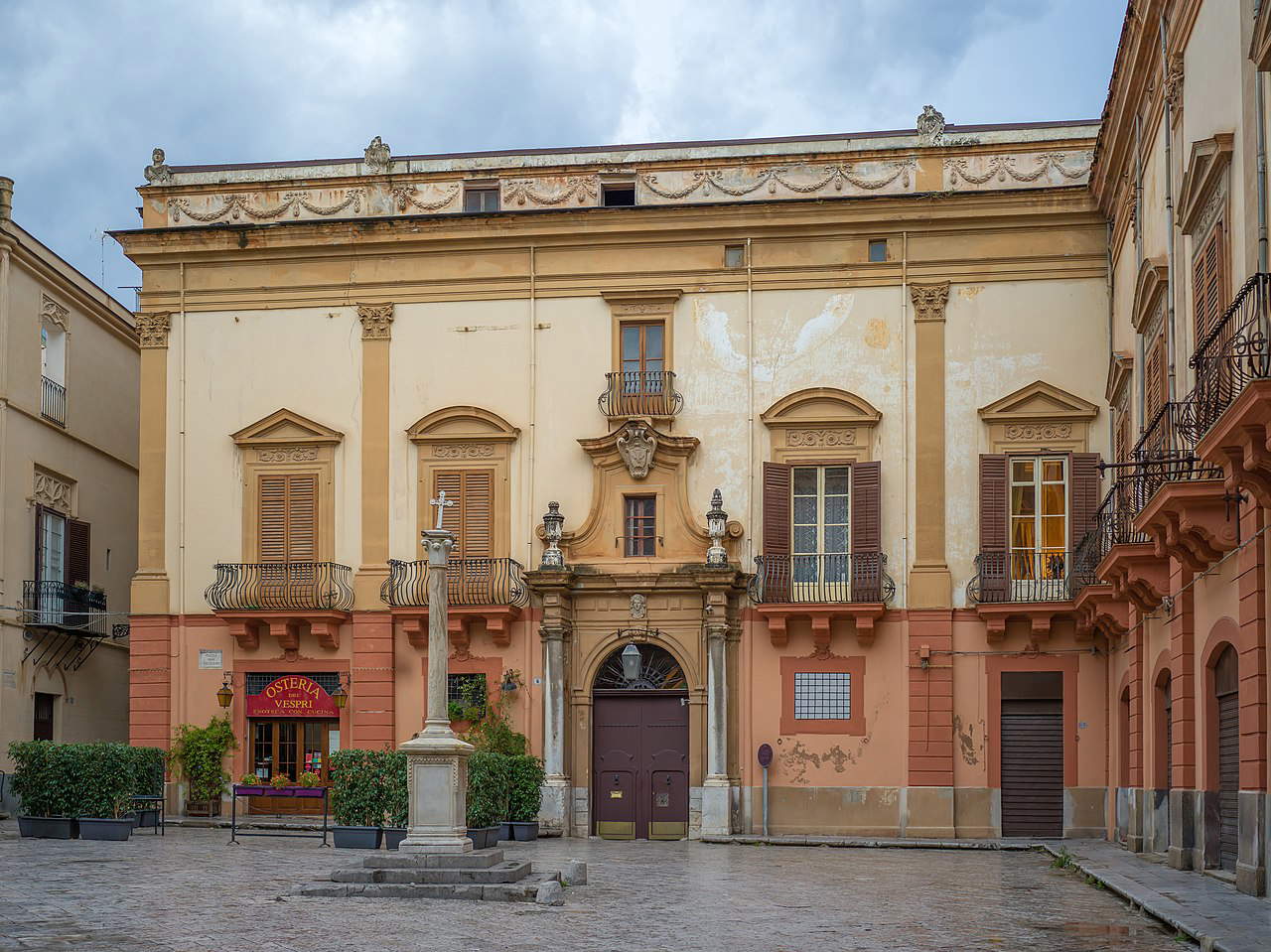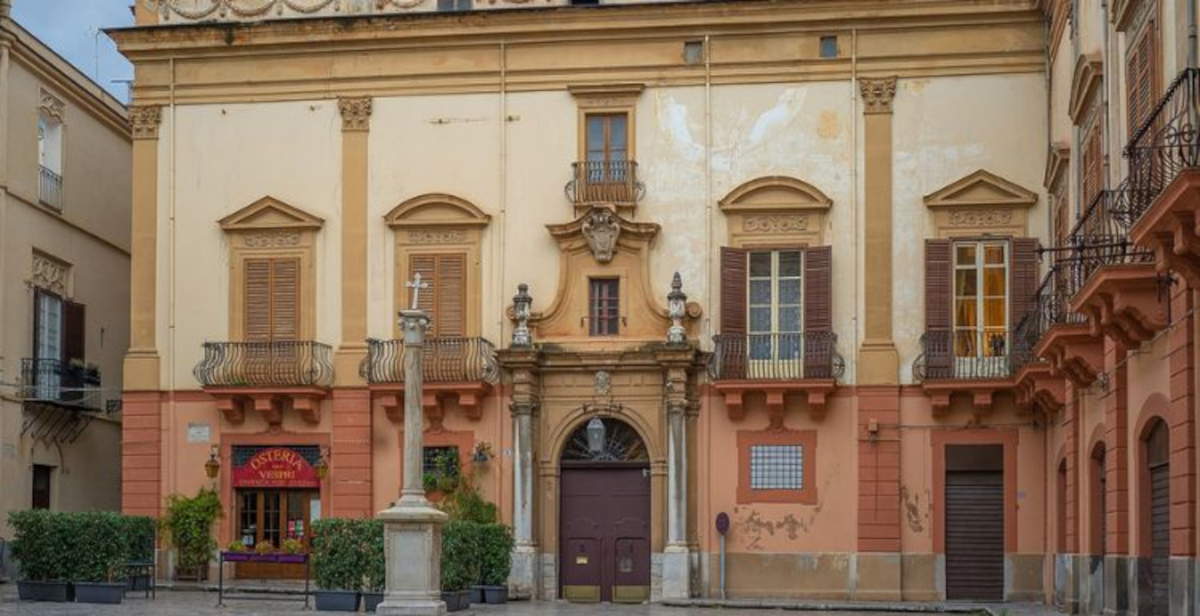Some ten million euros have been invested in 30 years, but no tax breaks have ever come to support those who have chosen to save one of Italy’s iconic heritage sites. This is the complaint of Princess Carine Vanni Calvello Mantegna di Gangi, who with her husband Giuseppe inherited and is responsible for the preservation of Palazzo Gangi Valguarnera, in the center of Palermo, famous for being the location of the famous ball in Luchino Visconti’s film The Leopard . “My mother-in-law died in April 1995: restoration work began the following month. And since then we have never, ever stopped. The palace lives only thanks to us,” says Princess Mantegna, who left a career tied to studies in political science and international trade to devote herself full-time to safeguarding the palace.
The palace, which stands in Piazza Croce dei Vespri, is considered one of the last dynastic residences in Europe to fully preserve its furnishings, decorations and historical collections. An architectural, artistic and cultural unicum of more than eight thousand square meters spanning five centuries of history. The earliest stages of construction probably date back to the mid-15th century, but the layout we know today was defined in the 18th century, when Prince Pietro Valguarnera married his niece to reunite titles and properties. Both passionate about art, they wanted to create a palace that would amaze European courts, and work went on for decades. What is impressive today, in addition to the sheer size and state of preservation, are the details: the monumental double-ramp staircase leading up to the hexagonal vestibule, enclosed by a stained-glass window designed by Ernesto Basile; the Hall of Mirrors, with mirrors in pure gold; the Venetian chandeliers; the floors inlaid like tapestries; the majolica from Vietri and Caltagirone; the fabrics and silks, such as the yellow Lampasso fabric lining the waltz salon immortalized by Visconti with Claudia Cardinale and Burt Lancaster.
But the preservation of all this comes at great cost. “Last week a laterna came back that we started restoring, and to do that we tracked down among the few last remaining silversmiths,” Carine Vanni Calvello points out. “I just asked the carpenter to give me an estimate to restore the two boudoirs: it’s always been like that in these houses. You spend your life doing the work, and I console my husband: I tell him he is lucky because he is the first in his family history to see the four elevations redone. We work better than the superintendence, now we have also been congratulated for the work in the terrace where the artistic solution that Andrea Gigante had wanted has been recovered. They no longer hinder us fortunately. The problem is mainly with politics that considers us idealists, dreamers. And only because we ask for tools like those that France has, a country that competes with Italy in the amount of unique artistic places,” he concludes.

TheArt Bonus, introduced in 2014 to encourage liberal donations in support of culture, therefore does not provide deductions for expenses incurred by owners of private cultural property.
“This is a mistake: it should be offered, to patrons who want it, to defiscalize interventions. In France you get up to 70 percent of the assets invested,” Princess Mantegna adds, “there are also these Endowment Funds. For example, the association of French historic houses has formed itself into a fund that collects the sums made available by patrons and in a transparent way decides where to use them. It is an intelligent and transparent way to channel the efforts that necessarily have to come from everyone to safeguard a cultural heritage that is an asset for the whole country. I am not asking for money from the state; patrons who would like to invest are there. Why hinder them? The truth is that we are penalized because we are owners. But this is short-sighted. Italy lives off its heritage, its culture. These beauties are a source of inspiration in so many other fields: architecture, fashion, design. Those who come to Sicily feed on the beauty they find only here. Artisans possess skills that are disappearing, this is a crime. And I’m not just talking about Sicily, I’m talking about the cashmere that is made in Piedmont, the leathers that are made in Tuscany: things that the world envies us. We should safeguard them, and instead we only look at the real estate aspect: the politicians believe that we can finance these works by renting a few places to make pubs. And unique jewels such as the abbey of Santa Maria del Pedale in Collesano or the Zucco estate near Palermo are left to go to waste.”
The recent history of Palazzo Gangi is thus also the story of a model of protection based on private responsibility. If the building has survived the urban transformations of the 20th century, the degradation and oblivion that has affected many Sicilian aristocratic palaces, it is due to the unwavering commitment of a family that chose to preserve, restore and not dismember. Yet in the face of this commitment, the legislation remains unchanged.
“Sicily is full of such places: it’s very sad,” the princess adds. “We do ours. We worked for two and a half years on the ballroom, for 10 years on the private part, we completely rebuilt the ceiling of the bedroom destroyed by arson, we rebuilt all the parts that were missing, what had been broken, stolen, always choosing the original techniques, the most expensive ones, we rebuilt the rotted woods. I did what I had to do. And now if I look in the mirror I can say that I helped save a beauty that otherwise would have been abandoned.”
The current configuration of the Art Bonus, which is reserved for public property, does not provide any concessions for Italy’s complex private reality, made up of historic residences, archives, collections and palaces that, while not belonging to the state, are an integral part of the national cultural landscape. But, to paraphrase The Leopard upside down, that’s not to say ... nothing changes.
 |
| Leopard Palace restored with 10 million, but princess denounces: 'no facilities for us' |
Warning: the translation into English of the original Italian article was created using automatic tools. We undertake to review all articles, but we do not guarantee the total absence of inaccuracies in the translation due to the program. You can find the original by clicking on the ITA button. If you find any mistake,please contact us.